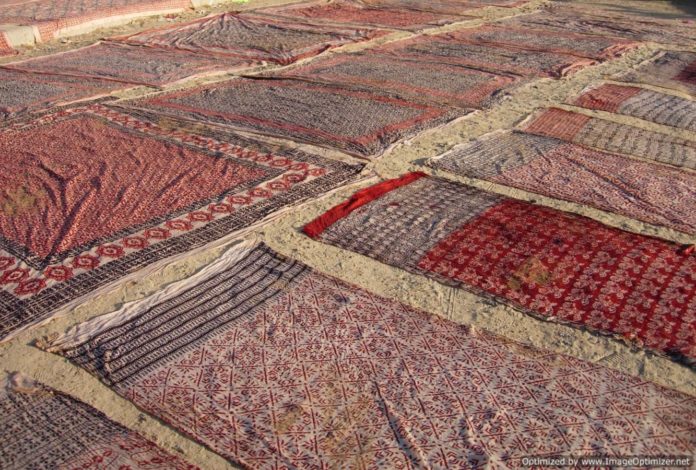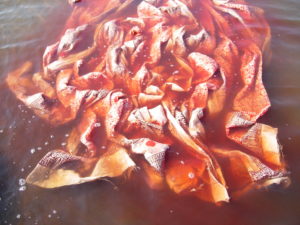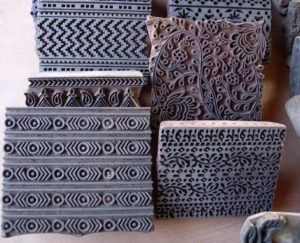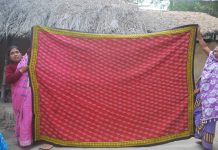It is hard to pinpoint an exact period for the advent of block-printing in India. The discovery of of mordant-dyed cotton fragments and the statuette of the priest-king unearthed at an Indus Valley site (2300 – 1750 BCE) with one shoulder draped in a trefoil patterned cloak, place the tradition in India back several millennia. Of the many centres still extant, the traditions of Bagh in Madhya Pradesh hold their own. This bustling small township located near the mineral rich waters of the Baghini River is home to several generations of hereditary printers belonging to the Muslim Khatri community. Till the 1980s, the Khatris catered to the textile needs of the Bhil and Bhilal tribes. Their print directory and colour palette is rooted in the material culture of their patrons. It contains deep blood-red and iron-black motifs of florals, vines and geometric patterns that are characteristic of customary wear for festivities and at the harvest.
Over the decades, as mill-printed textiles swamped the market, the ties between the block-printer and their patrons diminished. In the late 1980s, the patriarch of Bagh printers, the late Hajji Ishmael Khatri, explored new avenues to stay relevant. Ishmael researched and collected disused blocks from other printers and single handed collated the vanishing Bagh motif directory to establish Bagh as a block-printing center to be reckoned with.
The mordant printing technique process that is followed today sustains its links to its historic past. This process is based on an in-depth knowledge of the chemistry of colours and dyeing. It ensures that only those areas that have been printed with a mordant, in this case alum, retain color as the alum binds the dye to the textile like a glue. The series of complex tasks involved to produce a length of textile involve great skill at manipulating the carved wood-block to ensure that each print impression is placed flush with the next in perfect symmetry. Continuing to push boundaries, innovative experiments by the next generation of craftspeople include printing on floor-coverings, on jute, on leather and on bamboo blinds.







